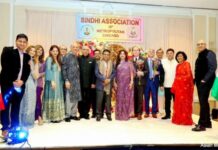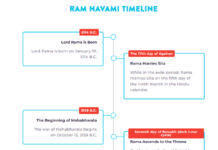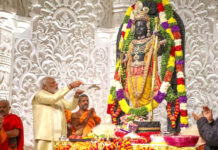Amar Bhujbal
Portuguese invaded Goa in 1510. After the invasion, thousands of local Hindus faced religious persecution; many were forcefully converted to Christianity. Some 160 temples were destroyed in the Goa Island by 1566.
Between 1566 and 1567, a campaign by Franciscan missionaries destroyed another 300 Hindu temples in Bardez (North Goa). Several restrictions were imposed on Hindus. New laws prohibited Hindus from repairing any damaged temples or constructing new ones. Ceremonies including public Hindu weddings were banned. Government jobs were denied to non-Christians. Whoever possesses an image or idol of a Hindu god or goddess was deemed as criminal.
Non-Hindus in Goa were encouraged to identify and report such idol holder to the Inquisition authorities. Those accused were searched and if any evidence was found, such “idol holder” Hindus were arrested and they lost their property. Half of the seized property went as reward to the accusers, the other half to the Church. In Salcete (South Goa), approximately another 300 Hindu temples were destroyed by the Christian officials of the Inquisition. People were punished on the ‘Torture Rack’. Many people fled with their deities. During the Portuguese period, the lives and deaths of the people of Goa were at the mercy of Christian priests. This ethnic cleansing left less than 20,000 non-Christians out of the total 2,50,000 Goan population.
This led Hindu leaders to think about way for bringing back converts to their origins. In year 1918, Ramchandra Narayan Lawande, Dr TrivikramYelekar, Vishnu KamatAjarekar visited Goa and found that Gavdas of Chimbel were eager to come back to Hindu fold. They found that Mulakeshwar was their Mul-Purush (first community person). On a specific day, Gavdas gathered together in the name of Mulakeshwar. Hindu leaders also found that this community was converted around 400 years back. Since then, these people followed the Christian rituals taught by missionaries. Gavdas used to called Christian priests for birth, marriage, death etc. to perform the rituals. However they found that converted Gavdas used to follow some Hindu traditions also.
During this period, Sanyasi Vinayak Maharaj Masurkar, a follower of Samarth Ramdas, had established a Bramhachryashram in Masur town of Satara district in Maharashtra. In Goa region, followers of Bramhachryashram arranged a program on the occasion of Lord Hanuman Jayanti (Birth Anniversary). Many people including Christian Gavdas attended the program. In this program, Christian Gavdas requested to touch the idol of Lord Hanuman. Their request was accepted by the Bramhachryashram followers. On this occasion, some Christian Gavdas requested that they want to reconvert to Hindu religion.
Accordingly, followers of Masurashram distributed Lord Hanuman’s portrait, taught Surya Namaskara and Hath Yoga to Gavdas. Masurkar Maharaj appealed to Gavdas to follow Hindu traditions, rituals and use Hindu names. Masurkar Maharaj conducted Satsang and Pravachan in the community meetings. After listening to Masurkar Maharaj, Gavdas recognized that their ancestors were Hindus. More number of Gavdas then finally decided to return to their original faith.
Shankaracharya Dr Kurtkoti gave permission to the reconversion of these Christian Gavdas. As a result, on February 26, 1928, in Chimbel village of Tiswadi tehsil, 800 Gavdas reconverted to the Hindu religion. On the same day, in Nagzar village of Tiswadi tehsil, 350 Gavdas returned to their original faith. For the next four days, around 1525 Gavdas from various villages returned to the Hindu religion. About 4851 Gavdas accepted the Hindu religion in Tiswadi tehsil only. A total of 7815 Gavdas returned to their original faith.
Although thousands of Gavdas returned to the Hindu religion, their names were not changed in Government documents. This procedure was carried out by Pune based Hindu organization named Hindu Mahasabha. This work started in the year 1969 and completed in the year 1970. Due to their efforts, the Hindu names of 3422 Gavdas were officially updated in the Government records.
Bramhachari Vasudev Swami, BramhachariAnadmurty, BramhachariShivram Swami, BramhachariDattamoorty carried out the Shuddhi Movement along with Masurkar Maharaj. The exact figure of the total number of reconversion of Gavdas in Goa is not available. As per the Goa Gazette, the number of Nav-Hindu Gavdas is approximately 25,000. Famous author B.D. Satoskar in his book Gomantak Sahitya Sanskriti and Prakriti stated that it is about 66,000.
After the Shuddhi movement, Masurashram opened schools in Goa at various places like Chimbel, Panvel, Carambolim, Dhulapi, Taleigao (Bandar), Calapur (Madyant), Caranzalem, Pale, Savai etc. Religious education was also imparted there. Adult literacy classes were started in the night. The rituals during marriages, birth, death etc. were also done by the Ashram.
(Excerpts from the reprinted book by Vivek Prakashan)






